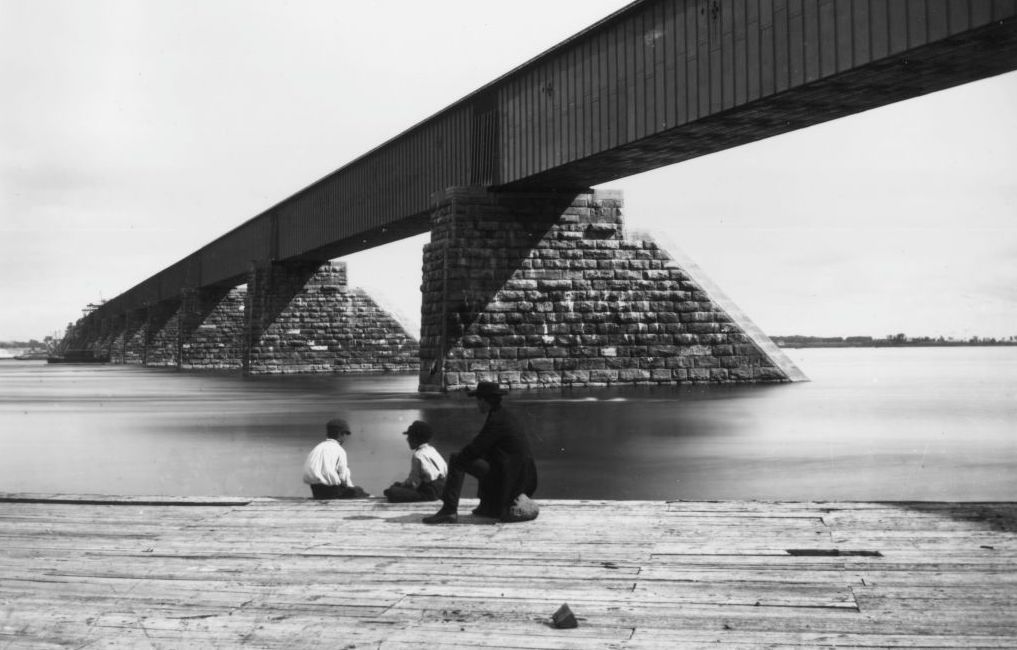The discovery of the remains and coffins of between 12 and 15 people at Victoria Bridge, near the Black Rock in Montreal, is proof there is a massive Irish Famine mass grave at this site which should be memorialized, say Irish community leaders.
Local media reported last week that archaeologists have discovered the remains of between 12 and 15 people in Montreal, close to the Irish Famine memorial known as the Black Rock, where 6,000 Great Hunger victims are thought to be buried.
Light rail dig
The discovery was made by archaeologists for the Réseau Express Métropolitain (REM), who were excavating in preparation for the construction of the future light rail system at Bridge Street. The Irish Memorial Park Foundation who has been petitioning for an Irish Famine memorial on this site for the last ten years believes this discovery is proof of a larger Irish burial ground.
Fergus Keyes, a Director of the Montreal Irish Memorial Park Foundation told the Montreal Gazette "I think we’ve been proven right".
Read more: Funeral lays 21 Irish Famine victims to rest in Canada
REM was digging in a small area of about 2.3 meters in diameter, where a pillar for the elevated light rail will be erected.
Keyes told the Gazette "In this one small space that the REM is digging in, the fact that they’ve already pulled up somewhere around 15 or more bodies is a pretty good indication how many burials are really under that area."
Montreal Irish Famine memorial
The Black Rock, a makeshift memorial to the Famine dead was erected in 1859 by workers constructing the Victoria Bridge. Today the Black Rock stands on the grassy median in the middle of Bridge St, in a disaffected industrial area near a Costco warehouse.

Workers at Victoria Bridge, Montreal.
Every year Montreal’s Irish community join the Ancient Order of Hibernians (AOH) in the annual “Walk to the Stone” to commemorate the more than 6,000 victims of the Great Hunger who died there in the years surrounding 1847.
The Irish community believes the planned light rail station should be named for the Great Hunger victims buried at the site, according to Keyes. This will include a memorial park.
Read more: The Irish Famine ghosts linger still on Grosse Isle
Keyes said the memorial park would pay tribute both to the Irish victims and the many Montrealers who risked their lives to care for them including Catholic priests and nuns, British soldiers, families who adopted orphaned children, First Nations who contributed food and money and Montreal’s then-mayor, John Easton Mills, who died of typhus while nursing the sick.

The Black Rock, erected by construction workers at Victoria Bridge, in Montreal.
The Irish Famine victims were "the worst immigrants you can imagine", Keyes said, highlighting the Montrealer's selflessness in coming to their aid and its importance given the polarizing modern-day debate surrounding immigration.
“They were poor, they were hungry, they didn’t speak the language, for the most part, they were illiterate and on top they brought disease,” he said.
“And a bunch of Montrealers of every language and culture went to help them, provide food, provide care, provide comfort.”
Answering Great Hunger questions
The archaeological dig at the site will continue for about another week, said Keyes.
Within the 2.3-meter wide hole bone fragments along with wood were discovered. These are believed to be from the stacked coffins.
Read more: Irish Famine studies in the US should be mandatory, like the Holocaust
A REM spokesperson Elizabeth Boivin said the skeletal remains are in good condition. She added that more bodies could be discovered since archeologists don’t yet know how deep the graves lie.
“It was in the context of an epidemic, so there was a public health problem, and the bodies were stacked up, put into coffins, but it wasn’t an organized cemetery as we know it,” she told GlobalNews.ca.
The recovered bones will be sent to a laboratory for analysis and study. This process will likely take a few months.
Keyes told the Gazette that the REM have promised to set up a meeting with the Montreal Irish Memorial Park Foundation once their analysis is complete.

The inscription on the Black Rock, at Victoria Bridge, in Montreal.
He said "We have a lot of questions...
“Can they define the gender, their approximate age? Can they extract DNA?
“Can they say if they were indeed killed by typhus or malnutrition, or a combination of both?”
In 1847, 70,000 Irish Famine migrants landed in Montreal overwhelming the city, which at the time had a population of 50,000. Many Irish lost their lives here during the typhus epidemic of 1847, a year that is named Black ‘47 in Irish history in memory of the worst period of the Irish Famine and the vast numbers of Irish leaving the country for foreign shores.
Keyes told the GlobalNews.ca “By September and October of 1847, we know they were running out of coffins and started trenching people.
"At the end of the day, they were digging a trench and throwing in 30 bodies here, there and elsewhere.”
Keyes commented on the 2018 dig, on the east side of the river, for Hydro-Québec, which uncovered mid-19th-century artifacts like bottles and crockery but no human remains. It's believed that these artifacts were deposited during the construction of the Victoria Bridge when sheds were constructed in the area.
These discoveries are consistent with research on where the unmarked mass grave is located, Keyes attests.
He praised the REM for their sensitivity to the Irish community’s concerns about the sanctity of the site. For example, the pillars are being spaced farther apart than usual to avoid disturbing the burial ground more than necessary, he said. The REM also held a blessing on the site in June ahead of the dig.
It is the Foundation's hope that the Great Hunger victims be reinterred at the site and commemorated. Victor Boyle, Co-president of the Irish group said: “It seems to me unseemly that you would take bones that have been there for more than 100 years and move them somewhere else.”
What do you think? Should the remains be reinterred in a memorial garden at the site? Let us know your thoughts in the comments section below.




Comments